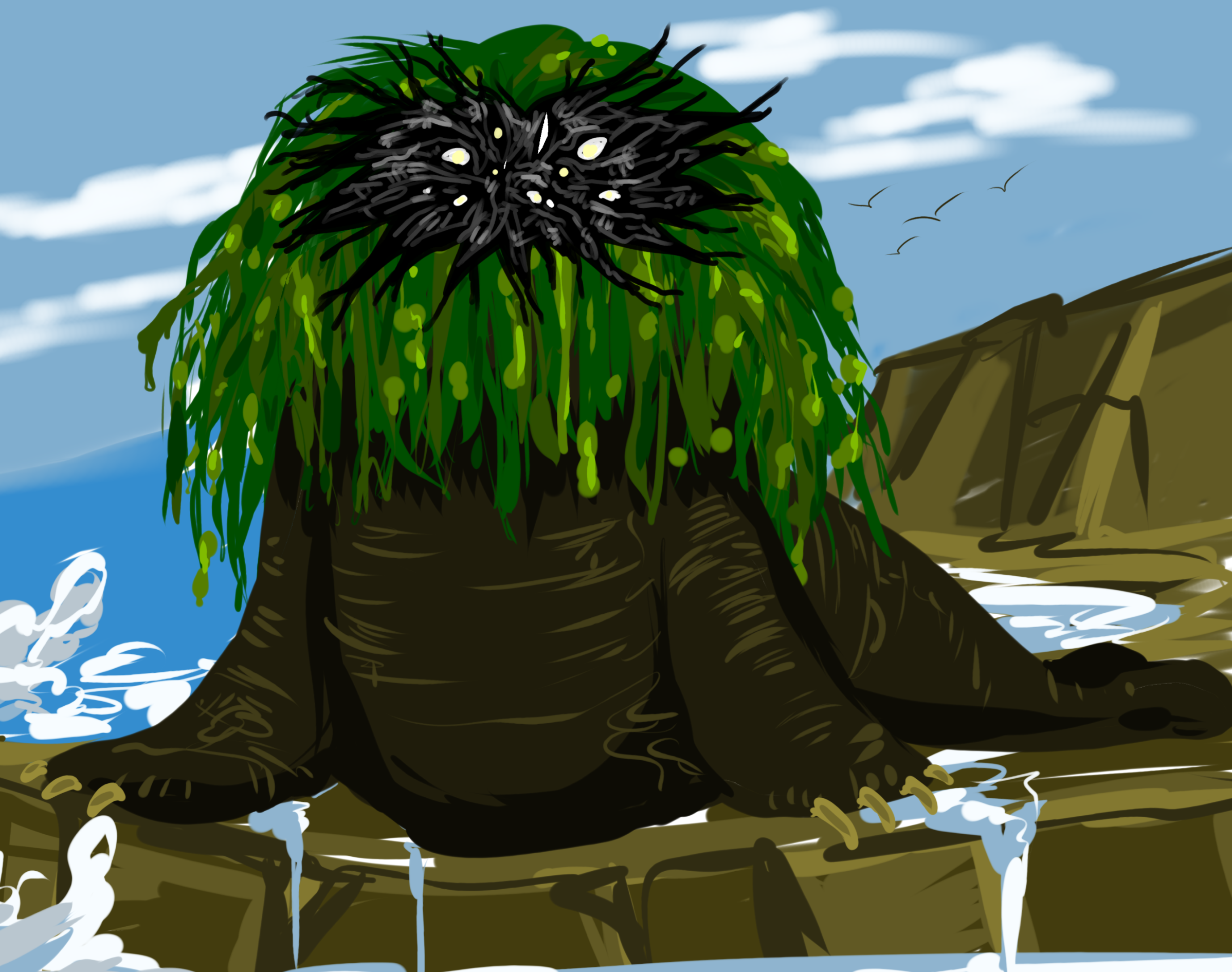Sea Masque (5e Creature)
Sea Masque[edit]
|
Large monstrosity, unaligned Armor Class 16 (natural armor)
Saving Throws Str +5, Con +5 Hold Breath. The sea masque can hold its breath for 10 minutes. Natural Camouflage. While the sea masque is prone and remains motionless, it is indistinguishable from a seaworn rock with seaweed. ACTIONSMultiattack. The sea masque makes two claw attacks. Claws. Melee Weapon Attack: +5 to hit, reach 5 ft., one target. Hit: 8 (1d8 + 3) slashing damage. Wave Howl. The sea masque unleashes a throaty and deep roar. Each creature within 15 feet of it that can hear and are not deafened must make a DC12 Wisdom saving throw or take 5 (1d6 + 2) thunder damage and be frightened until the end of their next turn.
|
 By Yanied Sea masques are strange, solitary creatures that reside atop the rocky shoals by the seaside of both turbulent waves and calm shores alike. While motionless, they can look like dark masses of kelp accumulated on the rocks atop which they rest. Variations of sightings sometimes say they look like craggy rocks. Others have said they look like hairy bulges because of how fine their kelp-like hair can appear. Sailors sometimes mistook them for a malicious form of merfolk because they looked rather menacing when they reared their heads around.
These creatures are natural-origin rarities that are similar largely to that of walruses. However, they are not as belligerent. Their diet is omnivorous, consisting of fish as well as kelp and other sea grasses. In colder months, their fat thickens significantly and their diet encompasses shellfish, sea urchins, and even echinoderms like starfish. Sea masques had been hunted in the past by fishermen villages that saw the beasts as encroaching predators on their catch. Through conservation efforts and better understanding of these creatures, it was revealed that sea masques play an important role in keeping coastal areas in balance. They prey on creatures that otherwise devour all other resources if left unchecked. During the time when sea masque numbers were critically low, fishermen observed that invasive sea grasses and urchins were plentiful while shellfish like abalone, mussels, and native kelp were at an all-time low.
Sea masques are not belligerent and live in small groups called herds. These herds usually consist of around eight to ten adults. Sea masques like to spend their time lounging around on rocks during low tide. This is when they are considered most vulnerable to predators and hunters. Usually, sea masques prefer to flee than fight, unless their young are threatened or it is mating season. Sea masques have a loud roar that is able to frighten creatures due to its intensity, and is used often as a last resort to force attackers away. |
Back to Main Page → 5e Homebrew → Creatures
